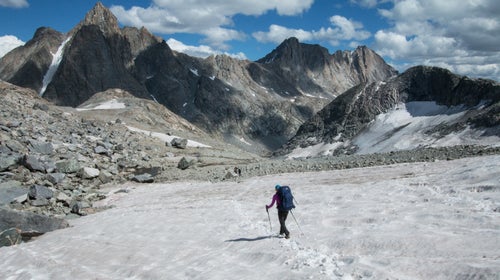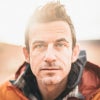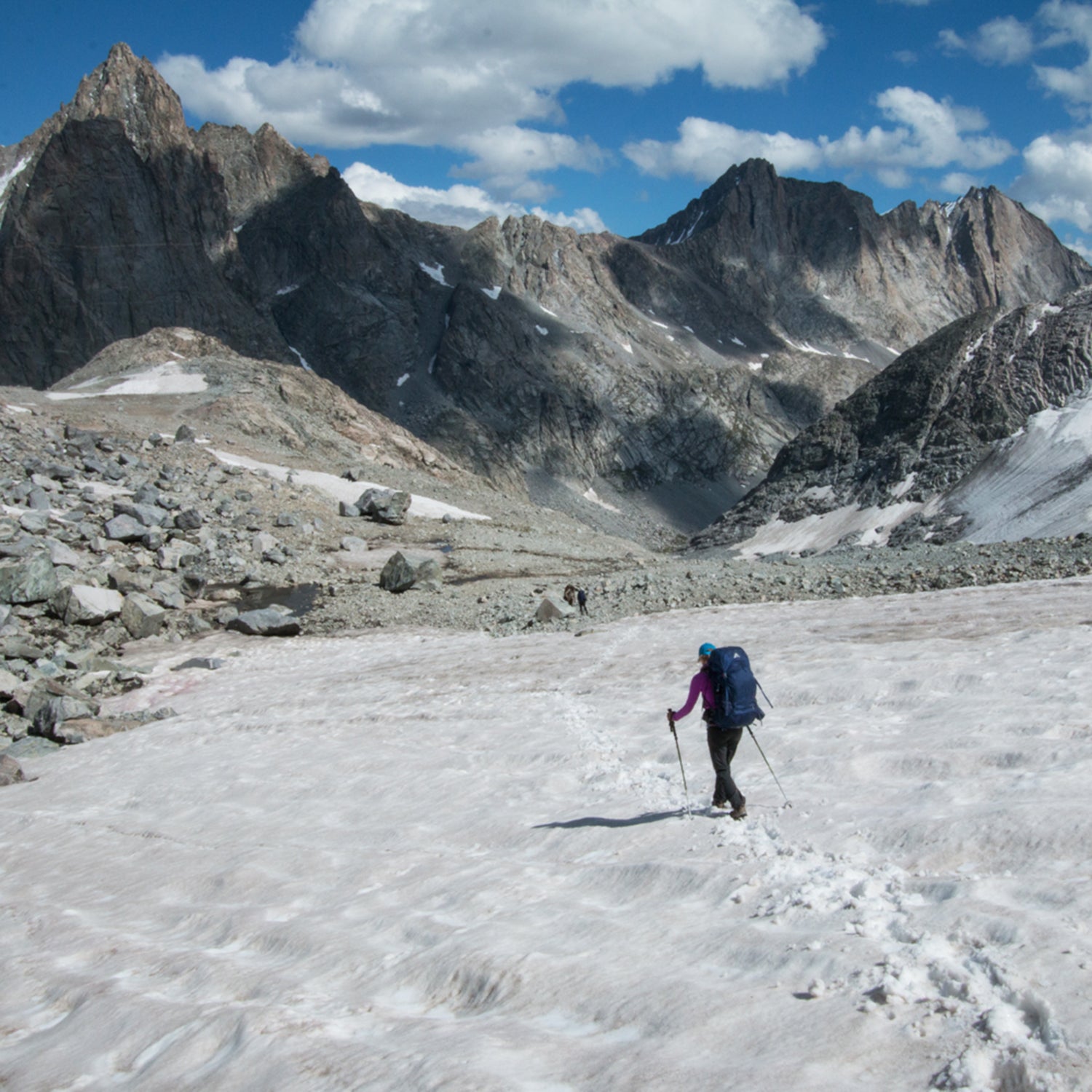This is the tenth year of my blog at Semi-Rad.com, and since I started it, I’ve been fortunate to get to do some pretty wonderful adventures. Throughout this year, I’ll be writing about 12 of my favorites,��. This is the eighth in the series.
In the predawn hours before the first day of our trip, I stared at the ceiling of the van above the mattress as I tried to get back to sleep—“tried��to sleep,” of course, to an insomniac, meaning��“tried to think of everything that we should have packed for a six-to-eight-day backpacking trip, even though it was way too late to purchase or acquire anything at that point.”��
Parked near the Green River Lakes Trailhead at the northern end of Wyoming’s Wind River Range, I had at least three worries about problems that could come up for��my girlfriend, Hilary,��and me over the next week, some that would become apparent very gradually over the course of several days��and some quite instantaneously:
- I wasn’t sure we had enough food. It was a challenge to cram seven days’ worth of food into a bear canister, and we’d ended up with a little over 2,000 calories per person per day—plenty for a week of sitting at a desk typing email, but a little light for a week of carrying a 40-pound backpack for 80 miles.
- We didn’t bring mosquito nets. Deet, yes—a whole 1.25 ounces—but no mosquito nets. A few days earlier, our friend Jaeger had said, a little skeptically, “So you’re going to the Winds, and you’re not taking bug nets?” Since the Winds are pretty famous for swarms of bloodthirsty mosquitoes, I had thought about it��but then rationalized that it was maybe a dryish year and maybe��they wouldn’t��be that bad?��Jaeger was not convinced. And neither was I.��
- We hadn’t brought bear spray. I knew I had a canister of it somewhere, but��then a few days before we left on the trip, I couldn’t for the life of me find it. But we’d be above tree line for most of our trip, so was it really necessary? It was almost a pound of extra weight.��
A few hours later, we locked the van, shouldered our oppressively heavy packs, and walked to the trailhead kiosk to start walking south. And there, next to the sign-in box, was a can of bear spray. I shrugged and stuck it in the side pocket of my pack. Seemed like a sign.
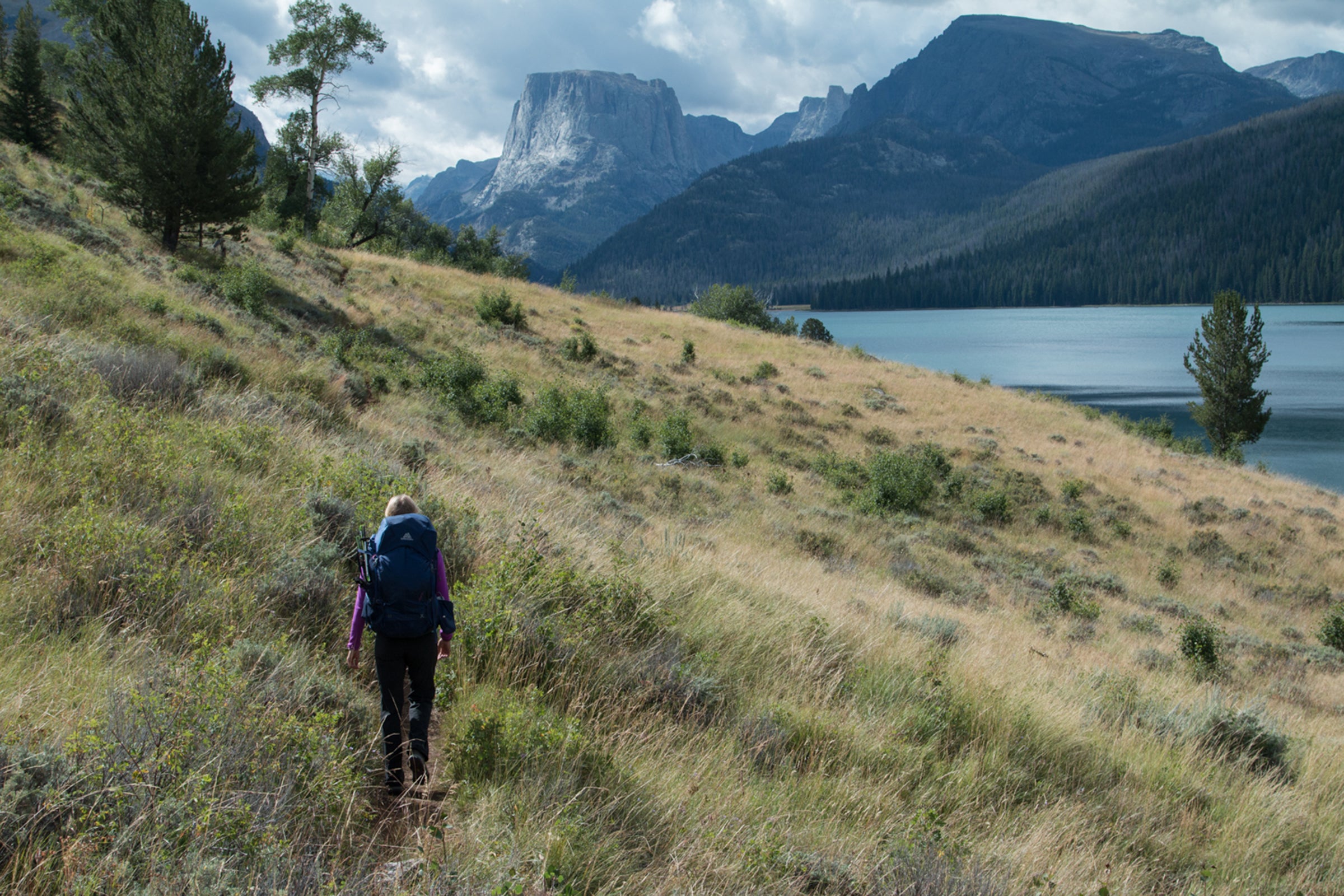
It rained on and off the entire��first day��as we traversed the eastern shore of the two Green River Lakes, with Squaretop Mountain towering above and dominating the view. It was a nice, easy grade for most of the day, and although we’d started a little later than I’d hoped, it was a relief to finally be done planning and actually walking. We had agreed to write about the trip, and take photos, and review some gear we’d been sent, so almost everything in our packs was new and unfamiliar. Which was fine, except for the backpack itself: mine seemed to be rubbing my hips rather abrasively. I chalked it up to being out of shape��for backpacking, having not carried a big pack at all since the previous year.��
I’d been to the Winds only once, four years prior, but I’d spent a chunk of time clicking around the internet looking at photos of the range: 100 miles of high, sweeping granite peaks hemming in hundreds—no shit, hundreds—of alpine lakes. Twenty of the 21 highest mountains in Wyoming are in the Winds, all except for the Grand Teton, just a couple hours’ drive north. If you like big stands of dense trees, you could do better elsewhere, but if you love staring at glacier-sculpted granite towers, the Winds are a paradise.��
In my internet puttering a few months prior, I had Googled the phrase “Wind River High Route.” I had researched and walked the original high route,��Switzerland’s Haute Route, in 2013, and had loved reading the story of how early mountaineers linked mountain passes and cols between Chamonix and Zermatt over several trips. I thought, Wouldn’t it be fun to try to do that in the United States, somewhere it hadn’t been done?
But Google revealed it had, in fact, been done: two guys named Alan Dixon and Don Wilson had put together a Wind River High Route��in 2013, and Alan had detailed it on his website, , with the route description, maps, photos, and detailed gear lists, right down to how many squares of toilet paper they’d packed. I was disappointed at first—it wouldn’t be a pioneering trip. And then I was 50 percent disappointed��and 50 percent excited that I wouldn’t have to figure out the route myself. And then I was��100 percent excited. Even if someone had been there before, I knew it would still be challenging: 70 to 80 miles, more than half of those miles off-trail, 14,000 to 20,000 feet of elevation gain, and more than 50 miles of walking above 10,000 feet. It might be nice to have the beta on where to go.��
�����ԹϺ��� Alan’s website, as it turned out, got some decent traffic. Our first day, we ran into two younger guys who said they were doing the high route. The next day, we met a horsepacker who was meeting a threesome, who were hiking after finishing what he called “the bushwhack route,” as well as a guy turning around after a day and a half into the high route because the talus was a bit much for his Labradoodle’s paws. I asked, “Did you find out about it on that guy’s website?” He laughed. “Everybody finds out about it on that guy’s website,” he said.��
A handful of people stretched out over an 80-mile route was not that many—it was certainly not a crowd like you’d find on Angels Landing in Zion, or on the fixed lines on Mount��Everest during a good-weather window. Some days��we saw a dozen or so people. Other days��we’d see no one for more than 24 hours.
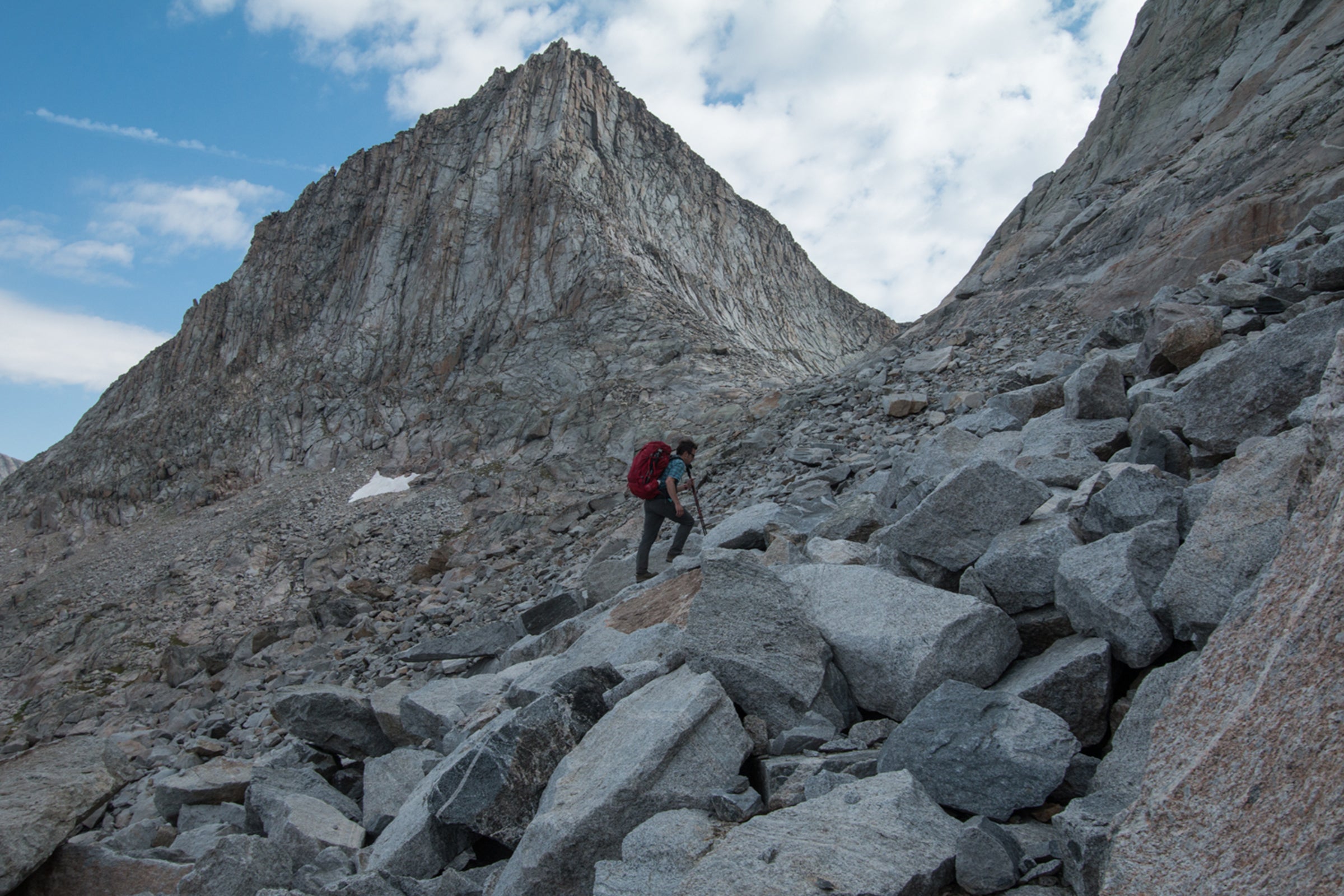
Our second day, we woke up a little soggy in our last-ditch campsite in the woods, where we’d camped after realizing we wouldn’t make it to the first alpine lake before dark. We got moving��and climbed up and over Cube Rock Pass, the first of nine passes we’d cross on the trip. By noon��we were picking our way up the rocky slopes on the west side of Knapsack Col, which topped out at just over 12,000 feet. The��afternoon sun warmed the air, and we were starting to drip sweat under our heavy packs by the top of the big climb. The view opened up over the other side of the col: the steep west face of Mount��Helen and its northwest couloir, still packed with snow in early August, and the peaks of the east side of Titcomb Basin. On the other side of the col, we’d descend over a short snowfield and then slabs and talus next to the Twins Glacier, the grade more gentle than the side we’d climbed up.��
This would become our daily pattern: look up at a daunting pass, grind up it wishing our packs were a bit lighter, be rewarded with a brand-new, amazing view of the other side, and figure out a way to get down. �����ԹϺ��� Alan had documented the route and confirmed it was possible, but the hourly and daily navigation still took some time, looking at maps and the Gaia GPS app on my phone to figure the best way up and down drainages, across tundra and talus, and through the high passes—and sometimes through waist-��and chest-high willows. For most of where we went, there were no trails��and no footprints.
But the experience of rolling over a high pass (or two) each day, punching through to a new zone, new mountains, new lakes, is something Hilary and I would talk about years later. Some passes would drop us into areas where we wouldn’t see another human the entire day, and some would lead to more popular spots where we’d see a dozen people. But mostly, it felt like we had the place to ourselves, and all we had to do to earn those great views was carry our big backpacks for a few miles every day—slowly. Some days we barely managed to walk ten miles (one day we only clocked 7.3), and the primarily off-trail walking required patience. We had chosen the easiest version of the high route, but we still felt like we were earning it.
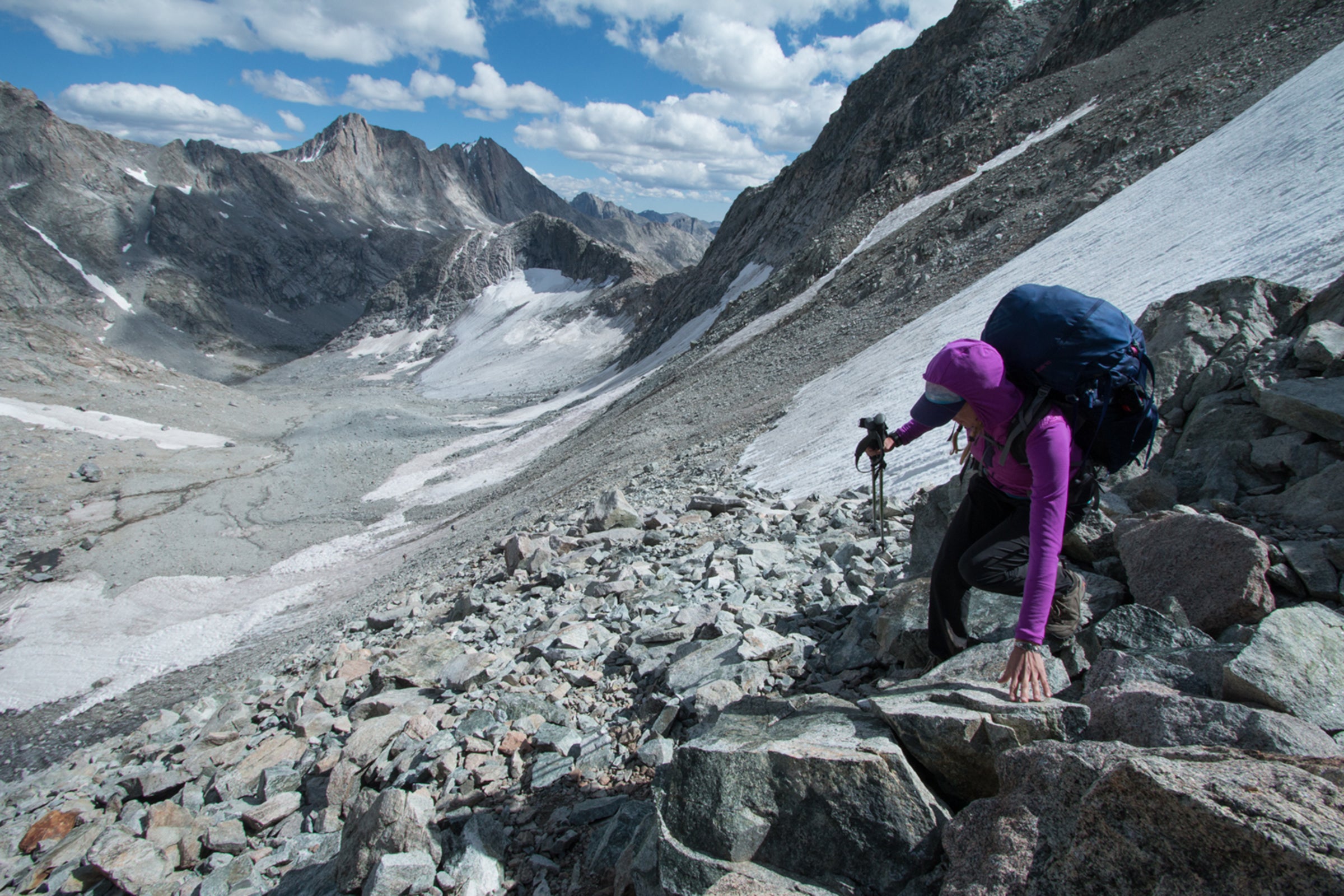
By day three, my backpack had rubbed my hip bones raw, and I finally took two strips of duct tape and taped over the bleeding spots. Which helped a little. But every minute I had my pack on my back, I was in pain. No bears (so far), and the mosquitoes had been minimal. The food, however, as I expected, was not quite enough. We were definitely going to lose a few pounds��but have just enough food for six and a half days. But if it took us eight days to get to the Big Sandy Trailhead on the south end, things would get pretty dire. I rationed my nine-ounce bag of Annie’s Pizza Snacks Mix, watching the pieces crumble, convinced that the last day��I would be pouring bottom-of-the-bag pizza-flavored powder down my throat. At least there was plenty of water here.

By the morning of day five, we had chugged through 42 miles and over five passes, already convinced that the Winds were one of the most beautiful places either of us had ever been. We’d camped the night before on a small saddle above Long Lake at about 10,800 feet and watched some clouds filling in, faint flashes of distant lightning illuminating the tent fly as we went to sleep. We didn’t know anything about our route on day five��except that if we were able to climb two passes, both higher than 11,000 feet, we’d be in pretty good shape to finish��with just enough food.��
We hiked fast in the morning, traversing the slopes above a half dozen different alpine lakes before joining the trail around Middle Fork Lake, which we gratefully followed until it disappeared and we were left to choose our own adventure through willows and up talus toward the 11,380-foot unnamed pass to the south, where we might��or might��not get trapped in a thunderstorm. We methodically picked our way up the slope as the sun went in and out of clouds, and a few hundred feet below the pass, Hilary had gotten a little ahead of me and I had one of those “I wonder what’s over there?” moments and started to trend right. I popped out to a view of the steep spires of Pronghorn Peak shooting straight up for over a thousand feet��from a deep blue-green lake I’d never heard anything about. Hilary came back down, took a rest for a few minutes, and the sun came out and lit the whole scene up for about ten minutes so I could take a few photos before the clouds filled back in.
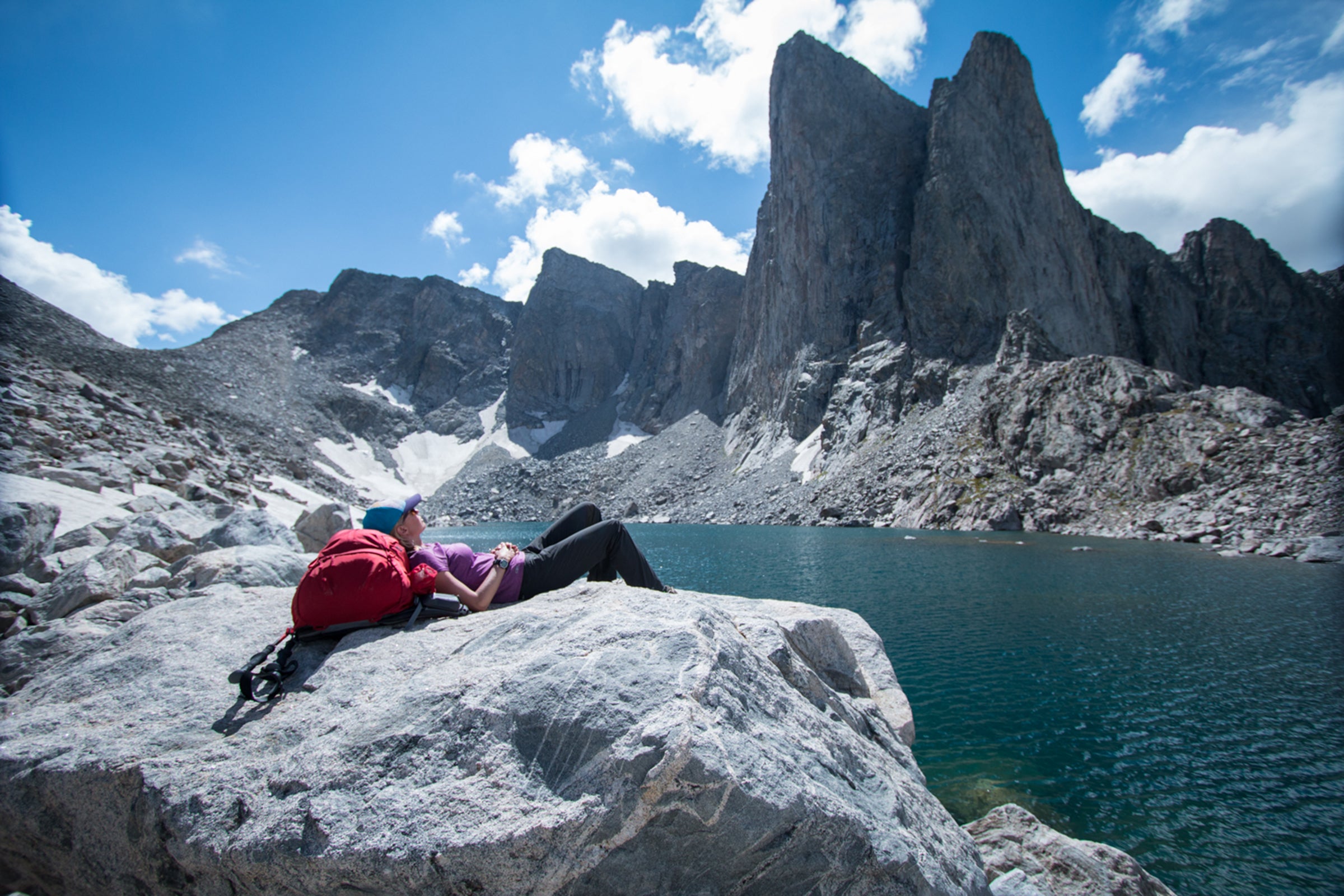
We trucked on, heading up the pass with a bit more urgency as thunder started to rumble, just close enough to motivate us to hustle down the other side of the pass. And we did, stopping at Lake Bonneville for a quick lunch during a brief five-minute rain shower, before we started back uphill to hopefully crest our last pass of the day before the sun set. It was easy going to the pass between Raid and Bonneville Peaks, but on the other side of the pass were big chunks of rock, and it was hard to find a line down that didn’t involve hands and feet scrambling over refrigerator-size��blocks. It was slow going.��As we descended, I started to realize we needed to trend north, sort of out of our way, to avoid a steep slope of talus. At 7:30 P.M.,��we found a spot near a small unnamed tarn��and called it a day after 12 hours of hiking as the sun dropped behind the dramatic face of Ambush Peak.
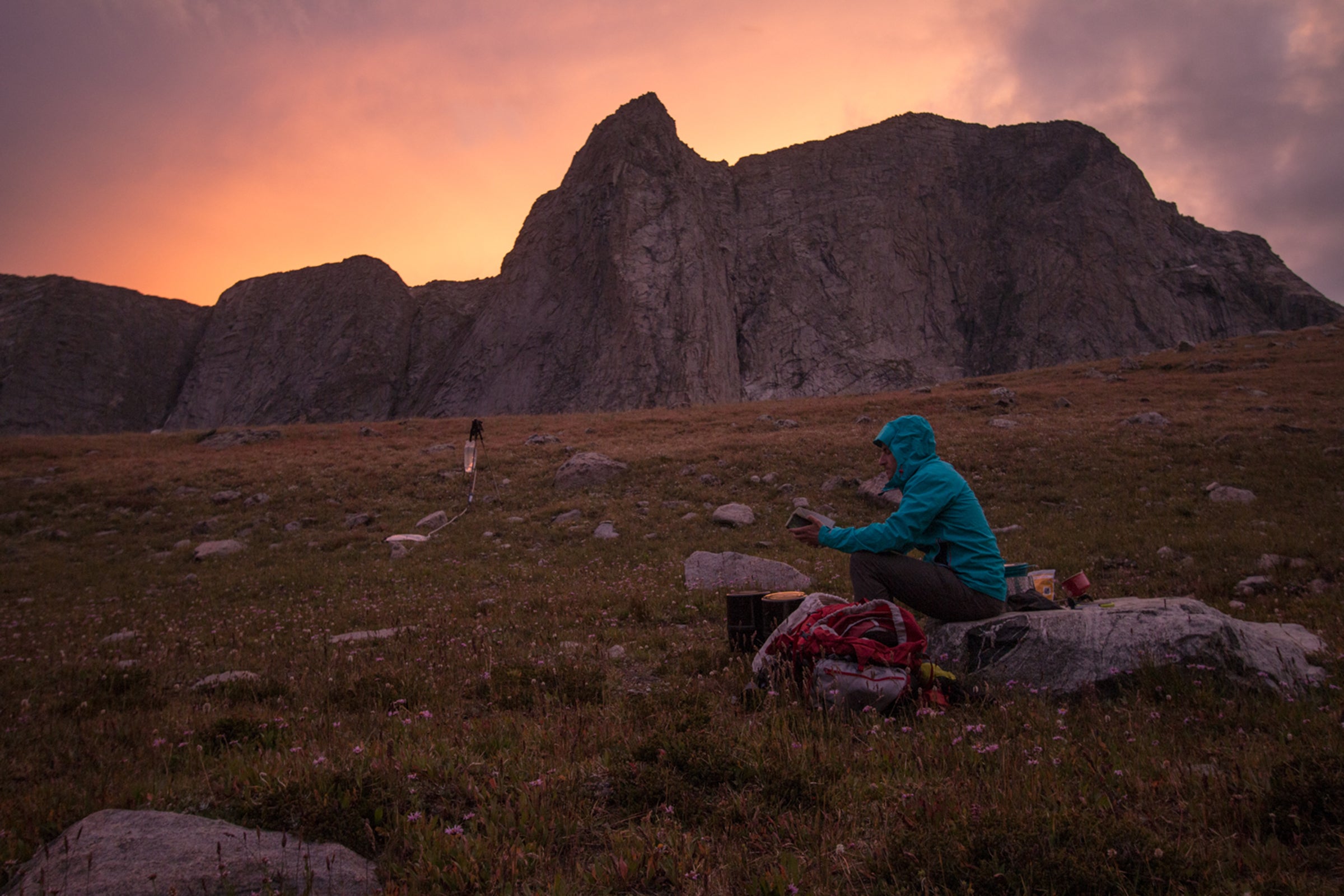
On day six, we crossed Texas Pass, our second to last of the trip, on firm snow. Trying to capture the famous Cirque of the Towers on the other side, I bobbled and dropped the lens cap of our camera in a bergschrund, perhaps never to be seen again, the only trace we’d leave of our trip. Most climbers come into the cirque from Jackass Pass on the opposite side, where we’d be departing the next day. The cirque, famous for its alpine climbing, has two of the 50��classic climbs of North America, as well as a bunch of other classic routes. I was content to just look up at the peaks and spires this time, relieved that we’d probably make it to our car without starving to death after all.��
We hadn’t seen a bear, which was just fine by me as well. But at our last campsite, south of Lonesome Lake, looking west at the cirque, we’d seen three moose grazing in the woods, between us and a few other groups of campers. My friend Kurt once told me he’d rather run into a grizzly bear than a moose, because he’d accidentally spooked a moose once while doing some field geology work, and it almost ran him over. Moose, apparently, can run 35 miles an hour for up to 400 meters, which is way faster than any human has ever run 400 meters. And they weigh 600 to 1,300 pounds, so if they hit you, it’d be like getting hit by a motorcycle. A motorcycle with antlers. And no one makes moose spray.��
I didn’t think this when I was cleaning up our stove and pots just before crawling into the tent to go to sleep that last night, until I heard some rumbling on the ground not too far away. I looked up, and in a couple seconds in the dim dusk light, realized the moose were running straight toward our tent. Hilary was inside rolling out her sleeping bag, and the moose were speeding our way. I had maybe one second to say something, and a choice: Do I yell to Hilary? In that second, I decided there was nothing she could do and nothing I could do, and I just hoped moose had good enough vision to see and avoid running into a four-foot-tall, six-foot-wide, bright-orange object with my girlfriend inside of it. And also maybe not run me over.��
They did. A few seconds after they passed, Hilary asked from inside the tent, “Was that the…”
“The moose,” I said. “Whoa.”
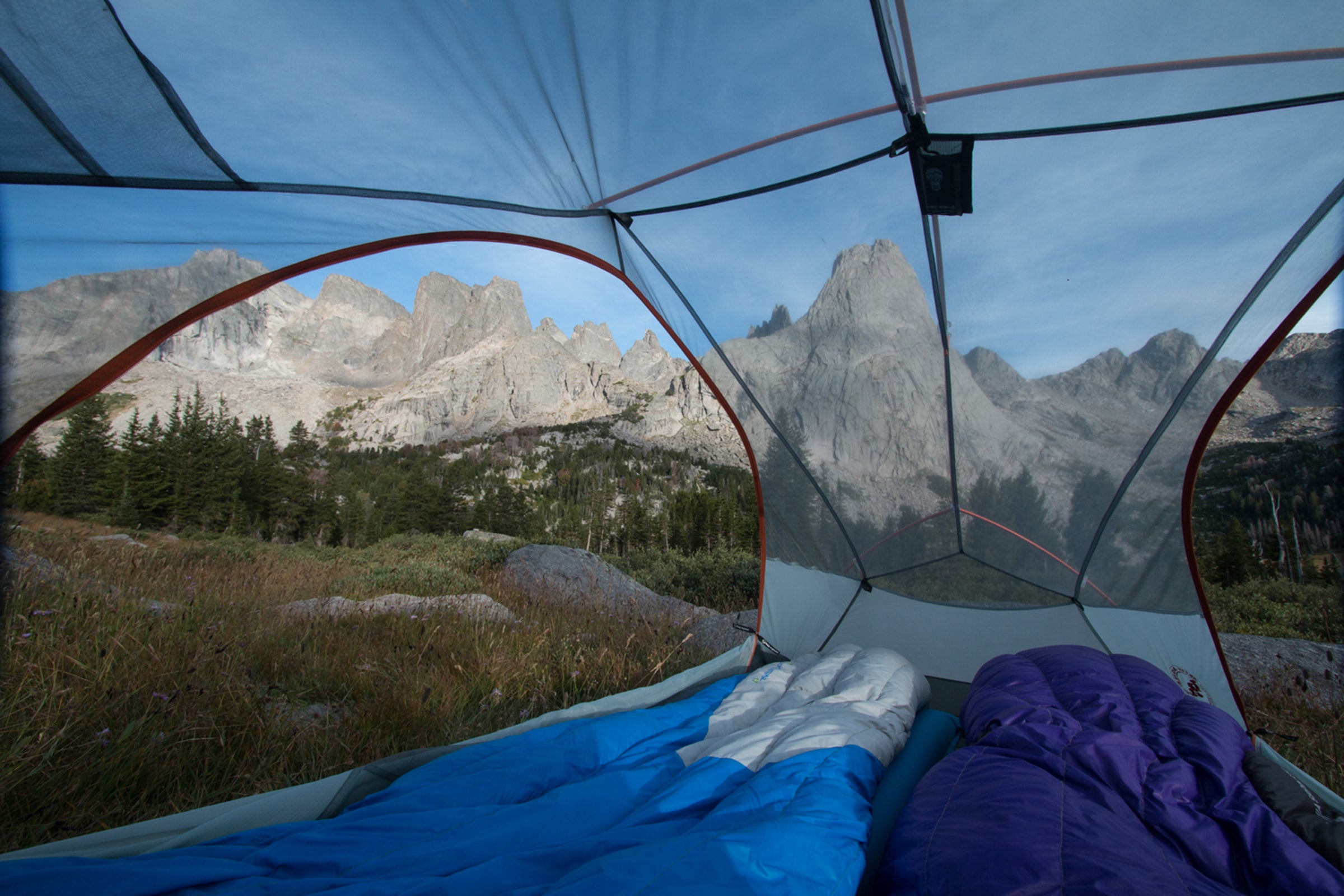
The next morning, we woke up early to watch the sunrise light up Cirque of the Towers, drank our last coffee, and hiked��up to our last pass. My hips were trashed from the backpack, I knew, but I wasn’t going to remove the days-old duct tape protecting them until I could take a shower. As we got closer to the Big Sandy Trailhead, we started to see more and more people, then dozens of cars. At the trailhead kiosk, I stopped for a second to sign our names and note that we had finished the Wind River High Route. Then I pulled the can of bear spray we had borrowed from the Green River Lakes Trailhead, our starting point 76 miles and six and a half days ago, and placed it on the kiosk, where someone else could grab it for their trip. And hopefully not have to use it.��
Note: We did a Wind River High Route,��and although many people have traversed the Wind River Range over the years, there’s still not a consensus on the “best” route. Andrew Skurka has put a lot of effort in developing a high-quality version of it��and has lots of info and history about it on .
